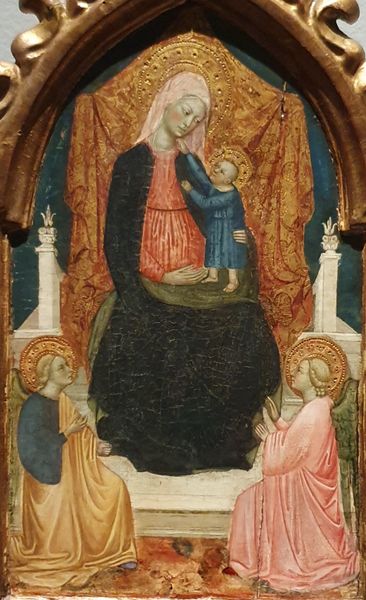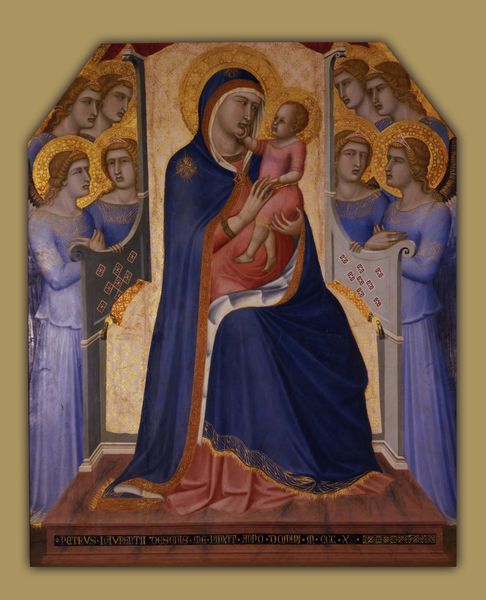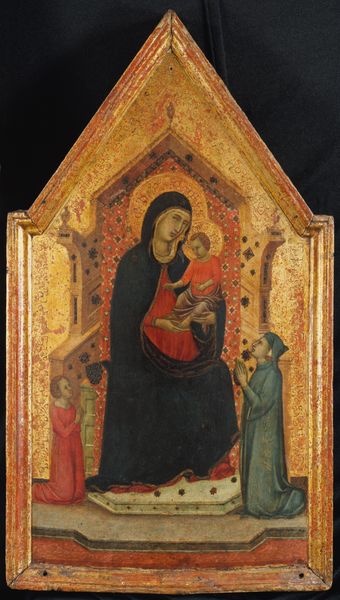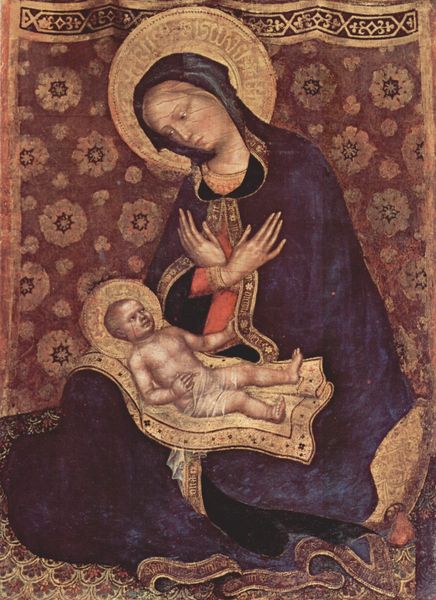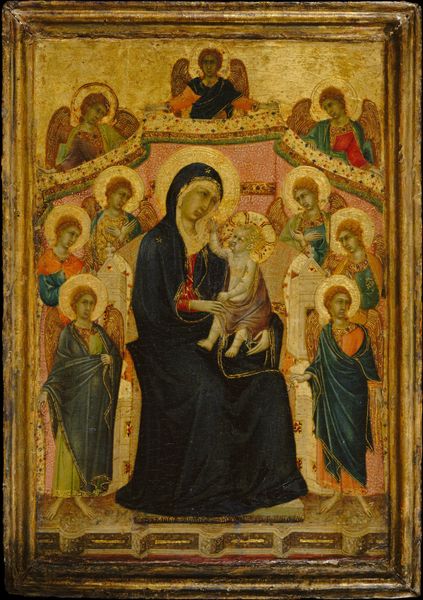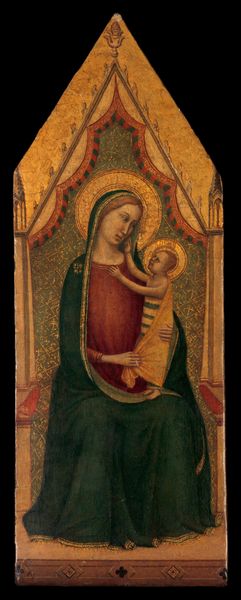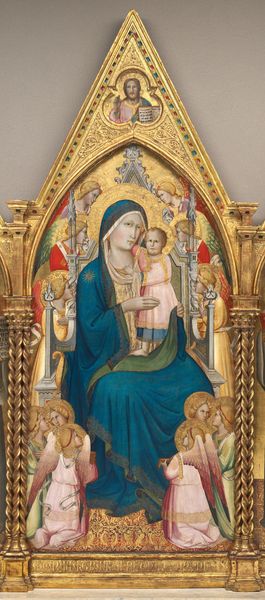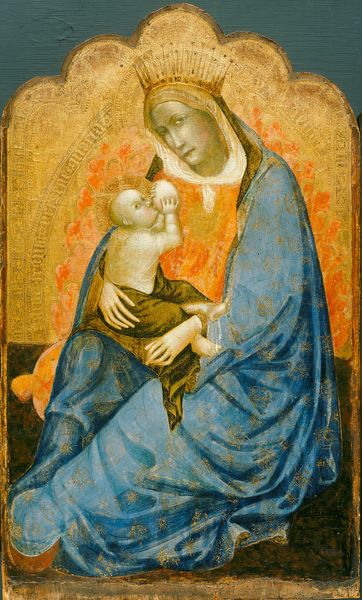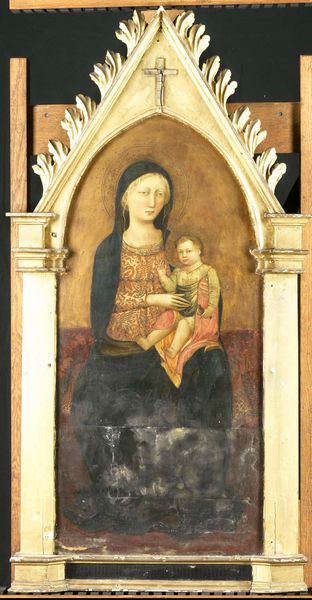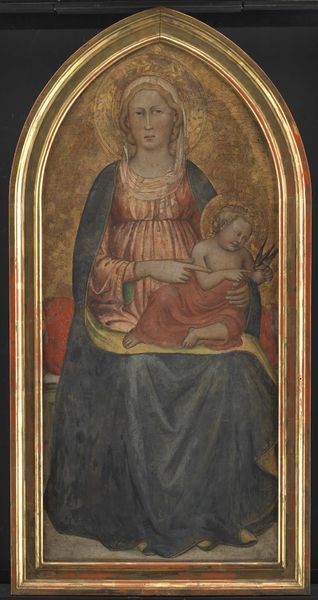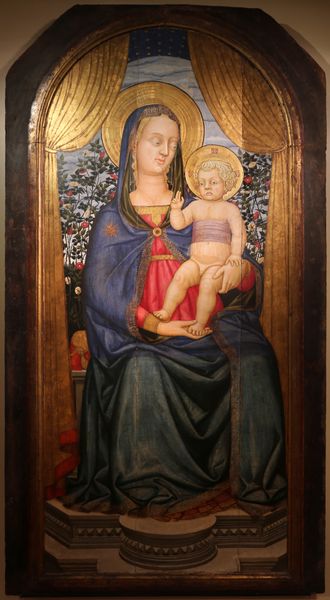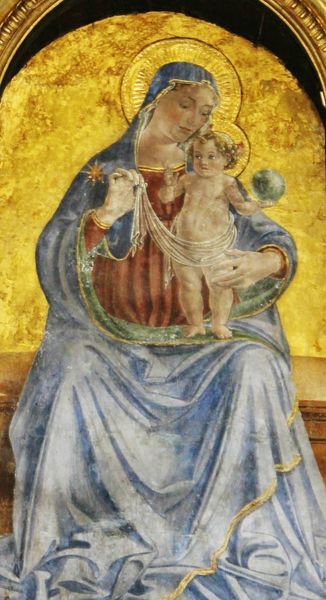
tempera, painting
#
portrait
#
allegory
#
tempera
#
painting
#
figuration
#
oil painting
#
history-painting
#
italian-renaissance
#
early-renaissance
#
portrait art
Copyright: Public domain
Editor: So, here we have Sassetta’s "Madonna and Child with Angels," painted in tempera around 1444. It’s quite striking. The gold background gives it a heavenly feel, and yet the Madonna seems very… grounded. What can you tell me about it? Curator: What I find compelling is the social and religious context in which this painting would have been viewed. This wasn’t art for art's sake. The imagery served very specific purposes. Who would have seen this, and where would it have been placed? Editor: I suppose it would have been commissioned, maybe for a church or a wealthy family’s private chapel? Curator: Exactly. Images like this affirmed power and faith. Notice how the Madonna's blue robe signifies royalty and her prominent placement reinforces the Church’s social hierarchy. How does that relate to the period in Italian history, with its small city-states competing to appear the most virtuous? Editor: Oh, that's interesting. It's almost like a PR campaign. The painting promotes both personal piety and civic pride. Curator: Precisely. It highlights not just faith but also the affluence and good taste of the patron. Even the gold leaf – think about where that came from and who had access to it. The availability and access to such materials contributed to it being showcased like this. How does understanding this change your initial feeling of the painting's ‘heavenly feel?’ Editor: It definitely makes it more complicated. It's beautiful, but it's also making a statement about power and status. Curator: Indeed. Art always operates within a complex web of social and political forces. Hopefully, understanding this work a bit deeper is useful to understanding this perspective! Editor: It is! Seeing it as part of a larger cultural narrative makes it so much more meaningful.
Comments
No comments
Be the first to comment and join the conversation on the ultimate creative platform.
